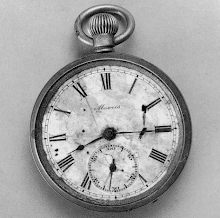Oct 27, 2012
3rd Deep Well Sampling Confirms Groundwater Arsenic Exceedances
In Spring 2012, perchlorate and arsenic were both detected above the current drinking water standards in several well depth intervals as deep as 160 feet. These detections were unexpected based on previous sampling results from the other deep wells. Purging and re-sampling of all MP-2 intervals were completed in July 2012 to confirm that these arsenic and perchlorate detections are truly representative of groundwater chemistry in the aquifer, and to ensure that these detections were not influenced by well construction. Analytical laboratory results confirmed the previous detections at groundwater flow depths between 35 feet and 160 feet below ground surface (bgs).
Spring Valley RAB
Oct 17, 2012
Spring Valley Follow-Up Health Study Launched by Johns Hopkins
John Hopkins University Researchers are asking residents and workers to complete a survey about their health issues in an effort to evaluate the impact of World War I-era chemical contamination in the Spring Valley area. The study is open to anyone who lives or works — or has done either in the past — in Zip codes 20015 or 20016. Residents of those Zip codes who live outside of Spring Valley itself will be used as the study's control group. Information about the study and links to download the survey or complete online are available at jhsph.edu/springvalley; hard copies are also available at the Tenley-Friendship Public Library, 4450 Wisconsin Avenue, NW.
John Hopkins UniversityLast month, researchers from Johns Hopkins University began conducting an extensive D.C.-funded survey into health issues in Spring Valley and surrounding neighborhoods. The work will continue through Nov. 16. It’s a follow-up to a 2007 study examining the health effects of World War I-era chemical contamination stemming from the U.S. Army’s use of the area for munitions testing. The earlier work found an elevated incidence of arsenic-related cancer in Spring Valley compared to Chevy Chase, which was used as the study’s control group ...
We’re glad to see this long-awaited study in progress, but we fear that the means of distribution will limit participation. It’s available at jhsph.edu/springvalley ... But we wish that researchers had mailed the survey to every resident of Spring Valley. Not everyone would respond, but at least the less computer-literate — and those who simply didn’t know about the study previously — would have had easy access. Even now, copies should be made available at more community gathering places. The Spring Valley advisory neighborhood commission’s Nov. 7 meeting — as well as the neighborhood’s polling place the day before — would be particularly opportune.
Editorial
Northwest Current
October 17, 2012 (pg. 10)
Subscribe to:
Posts (Atom)
.jpg)
.jpg)
.jpg)
.jpg)


